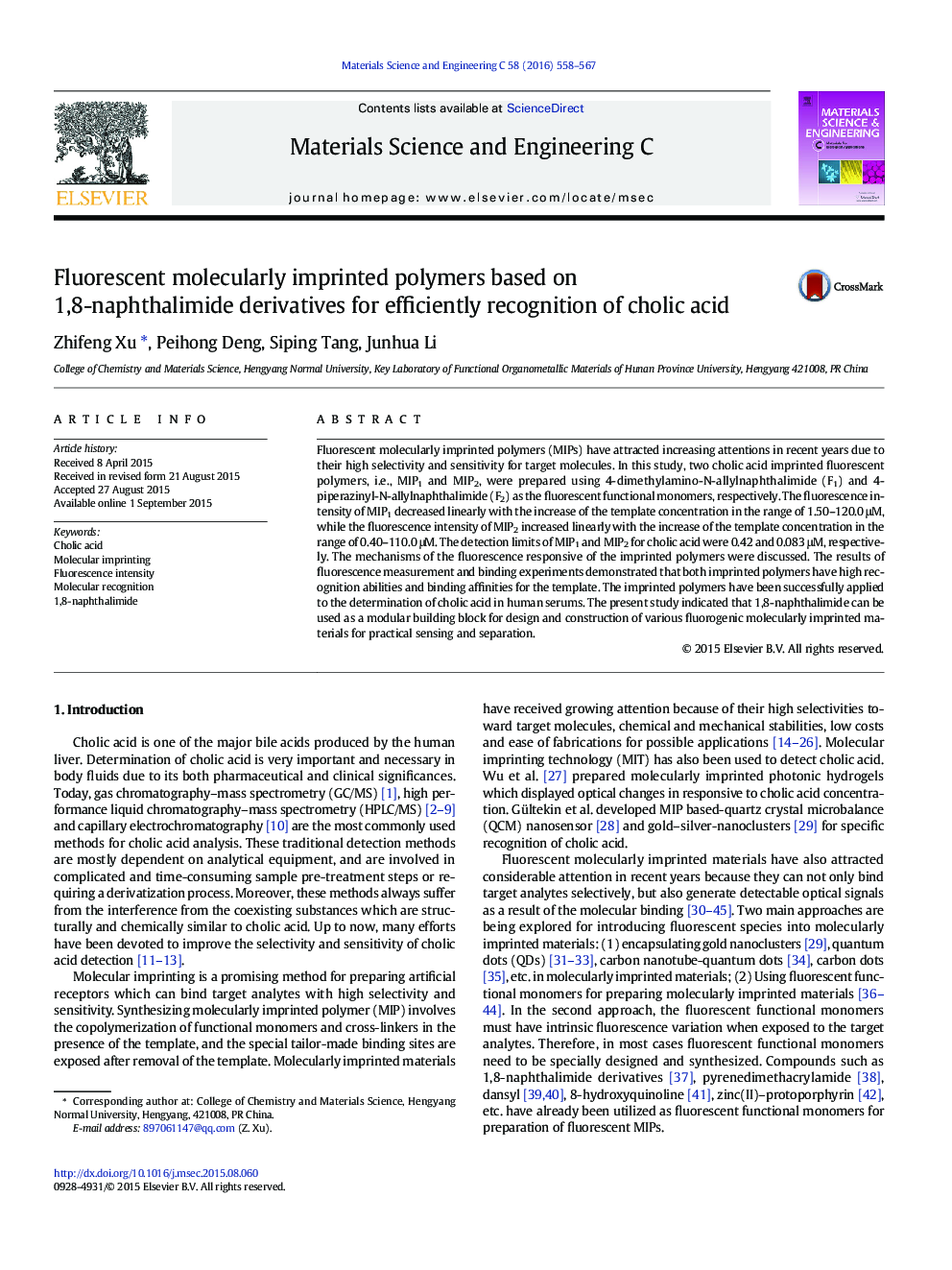| Article ID | Journal | Published Year | Pages | File Type |
|---|---|---|---|---|
| 7868871 | Materials Science and Engineering: C | 2016 | 10 Pages |
Abstract
Fluorescent molecularly imprinted polymers (MIPs) have attracted increasing attentions in recent years due to their high selectivity and sensitivity for target molecules. In this study, two cholic acid imprinted fluorescent polymers, i.e., MIP1 and MIP2, were prepared using 4-dimethylamino-N-allylnaphthalimide (F1) and 4-piperazinyl-N-allylnaphthalimide (F2) as the fluorescent functional monomers, respectively. The fluorescence intensity of MIP1 decreased linearly with the increase of the template concentration in the range of 1.50-120.0 μM, while the fluorescence intensity of MIP2 increased linearly with the increase of the template concentration in the range of 0.40-110.0 μM. The detection limits of MIP1 and MIP2 for cholic acid were 0.42 and 0.083 μM, respectively. The mechanisms of the fluorescence responsive of the imprinted polymers were discussed. The results of fluorescence measurement and binding experiments demonstrated that both imprinted polymers have high recognition abilities and binding affinities for the template. The imprinted polymers have been successfully applied to the determination of cholic acid in human serums. The present study indicated that 1,8-naphthalimide can be used as a modular building block for design and construction of various fluorogenic molecularly imprinted materials for practical sensing and separation.
Keywords
Related Topics
Physical Sciences and Engineering
Materials Science
Biomaterials
Authors
Zhifeng Xu, Peihong Deng, Siping Tang, Junhua Li,
